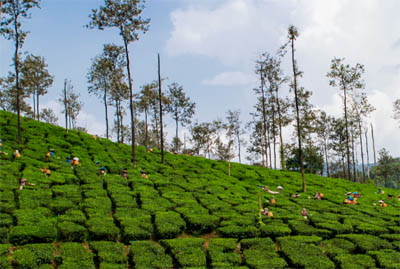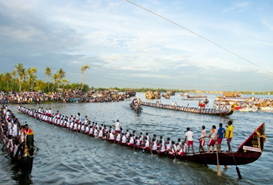Kutiyattam (Koodiyattam) means’ acting together ‘in Kerala’s historic classical dramatic art form. Kutiyattam, one of India’s ancient living theatrical traditions, has been declared a “Masterpiece of the Oral and Intangible Heritage of Humanity” by UNESCO. The intangible oral art form comprises elaborate costumes, real musical instruments, jewelry, and dramatic make-up. These tangible aspects showcase innumerable moods that transport the buffs of art to a world of ultimate bliss. So, what are you waiting for? Book your Kerala tour package with us.
Origin of Kutiyattam
With its origin nearly 2000 years ago, the rare art form combines aspects of ancient Koothu with dramas in Sanskrit theater. Though Kutiyattam boasts thousands of years of history in Kerala, its actual origin or evolution remains a mystery.
The ancient tradition came into the picture before Kathakali and other theatrical forms. Traditionally performed in temples known as Koothambalams, they efficiently portray the acts from epics like the Mahabharata and Ramayana.
Kutiyattam finds its roots in Koothu. The concept of dramatized dance worship services was considered vital, along with the chanting of the hymns.
Check out Kerala Tour Packages, Thekkady Tour Packages, Wayanad Tour Packages, Complete India tour package
Who performs Kutiyattam?
Nangiars, the women of the Nambiar caste, and Chakyars, a subcaste of Kerala Hindus, perform Kutiyattam. The traditional art form creates a visual retreat when two or more characters mark their presence on the stage. They act to the tunes of drummers and mizhavu.
A single actor can perform the same, but somebody may accompany them after a few days. The Chakras are the center of attraction, whereas the Chakyar women are restrained from participating. Instead, the female counterpart is played by Nangyaramma.
Check out Kappad Beach Tour Packages, Palakkad Tour Packages, Kumarakom Tour Packages
How is Kutiyattam performed?
Kutiyattam is an art form that determines the text. The Sanskrit theater helps to relieve various scenes from the famous epics. Hasta abhinaya (the language of gestures) and Netra abhinaya (expressions of the eyes) are very prominent.
Ten to fifteen years of rigorous training are required to become fully-fledged performers. Actors are trained to control their breathing sophistically and make delicate muscle shifts in the body and face. It takes sincere effort for days or weeks to master a single act. Moreover, it is surprising that presenting a few cantos from a play can take hours. Also, the entire performance can last for days.
A perfect confluence of music from various instruments and Vedic chants and ragas creates an aura. The person who explains the entire Sanskrit play in Malayalam and adds humor and fun to it is called Vidushaka (jester). An oil lamp is usually placed on the stage while performing to indicate a divine presence.
Explore Kerala Backwaters Tour for 5 days
Attire worn while performing Kutiyattam
Elaborate costumes, decorative headdresses, and delicate makeup bring life to Kutiyattam. Actors are dressed up in white, red, or black. But the jester wears different attire and unique makeup to stand out amongst the rest. Varied color schemes and designs depict various emotions, attributes, and moods. Only natural colors and paints are used for makeup.
Where is Kutiyattam performed?
Earlier, Kutiyattam was a part of temple rituals, but nowadays, this dying art is practiced in the province of Kerala.
Browse through our Kerala tour packages from Mumbai












